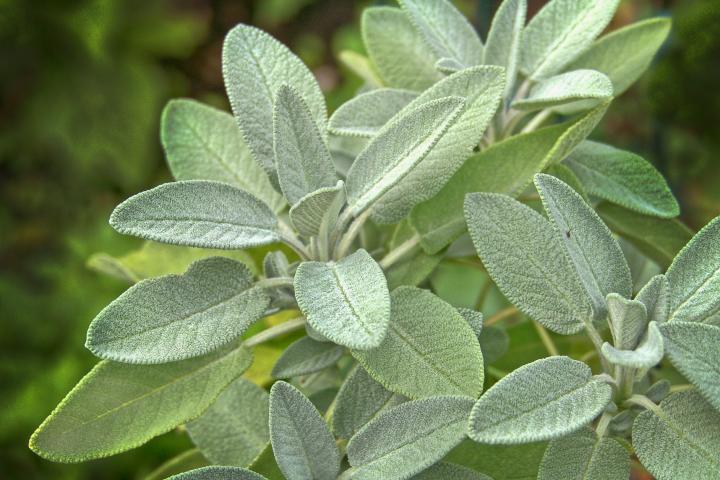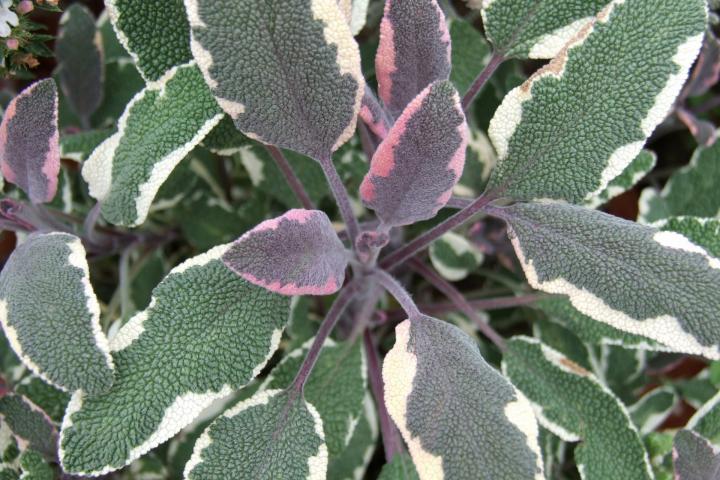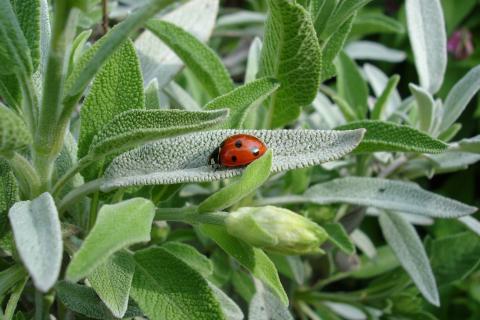Garden sage is easy to grow—and a wonderful culinary herb that flavors meat and bean dishes (including that Thanksgiving stuffing). See how to plant, grow, and harvest sage.
Sage is a hardy perennial with pretty, grayish green leaves that like as good in a perennial border as they do in a vegetable garden. It grows spikes of spring flowers in different colors, including purple, blue, white, and pink.
Not all sage varieties are culinary; the most popular kitchen sage is called Salvia officinalis. The origin of the salvia name speaks to this herb’s age-old medicinal value from the Latin salvus “to save” and salvere, “to heal”. Sage contains antioxidants which help reduce the risk of serious health conditions like cancer. It’s also rich in vitamin K, which aids the body in clotting blood.
How to Plant Sage
- Plant sage in full sun.
- Sage should be planted in well-draining soil; it won’t tolerate sitting in wet soil.
- The easiest and best way to start sage is from a small plant. Set the plants 2 feet apart.
- You can also sow seeds up to two weeks before the last frost date. (See local frost dates.) Plant the seeds/cuttings in well-drained soil 1 to 2 weeks before the last spring frost.
- For best growth, the soil should be between 60º and 70ºF.
- Plants should grow to be between 12 and 30 inches in height.
- In the garden, plant near rosemary, cabbage, and carrots, but keep sage away from cucumbers.
How to Grow Sage
- Be sure to water the young plants regularly until they are fully grown so that they don’t dry out. They’ll need a consistent moisture supply until they start growing quickly.
- Prune the heavier, woody stems every spring.
- It’s best to replace the plants every few years so they remain productive.

- Rust
- Powdery mildew
- Stem rot
- Fungal leaf spots
- Whiteflies
- Aphids
- Spider mites
- ‘Tricolor’ sage, for a bit of color in the garden (yellow, mauve, and sage green)

How to Harvest Sage
- Pinch off leaves or snip off small sprigs from the plant.
- During the first year, harvest lightly to ensure that the plant grows fully.
- After the first year, be sure to leave a few stalks so that the plant can rejuvenate in the future.
- If fully established, one plant can be harvested up to three times in one season.
- Stop harvesting in the fall so the plant can prepare for winter.
How to Store Sage
- Sage’s flavor is best when fresh, but it can be stored frozen or dried.
- To dry, hang sprigs in a shady, well-ventilated area and allow them to air dry, waiting until the leaves crumble easily to store in tightly lidded jars.
- Sage keeps its flavor better if stored in the freezer. Freeze leaves or stalks on a tray, then move the leaves into a zippered bag or container. Some cooks blend the leaves with oil, pack the ground mixture into ice cube trays to freeze, and then transfer the cubes to a container.
- See our full article on preserving herbs.
- Anyone who has sage planted in their garden is reputed to do well in business.
- For other greens to use in your cuisine, see the Leafy Greens: Health Benefits page.
A great way to incorporate the healing benefits of sage is “Sage Butter.” With two ingredients and five minutes, you have an amazing herbal butter that’s wonderful on sweet potatoes, chicken, tossed vegetables, fried eggs, toast, popcorn, and whatever you wish!
In the video below, herbalist Patty Sanders show us how to make sage butter—and also talks all about the healing benefits of sage. See recipe.




